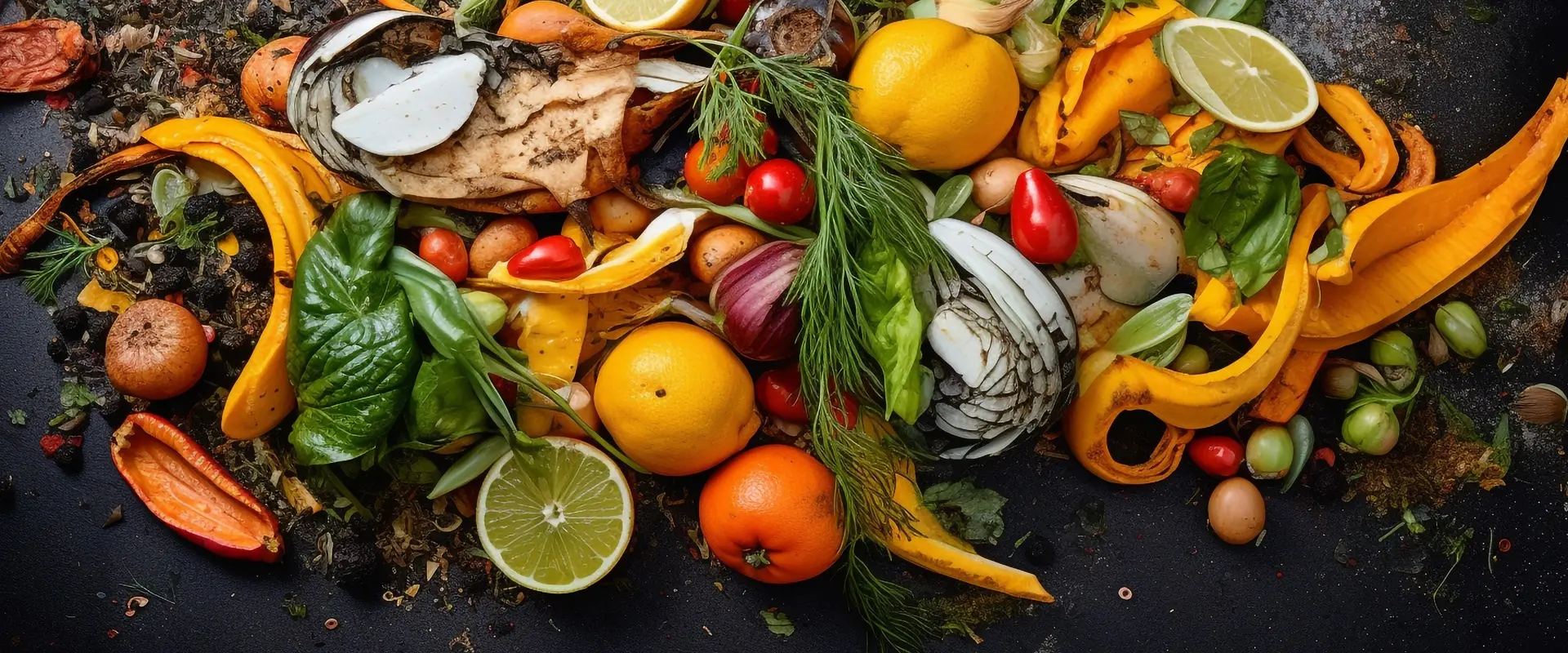
05 June 2024
Tackling Food Loss and Waste in Japan
As tourism has picked back up in Japan after the COVID pandemic, many people come to visit this amazing country for its sights, people, culture and mostly its food. Japan, a country renowned for its culinary excellence and cultural heritage. What tourists may not see however is that Japan faces a significant challenge in managing food loss and waste. According to the Ministry of Environment (MOEJ) and the Ministry of Agriculture, Forestry and Fisheries (MAFF) Japan discards approximately 6 million tons of food loss and waste, which excludes inedible parts, annually. (In discussing this issue here, we will let “food waste” stand for all kinds of “food loss and waste”.) This figure is alarming given the global push towards sustainability and resource efficiency. Addressing food waste is not just an environmental necessity but also an economic and social imperative. This article delves into how Japan is confronting food waste issues, the challenges it faces, and the emerging opportunities that could turn this problem into a model of sustainable practice.
Food waste in Japan occurs at various stages of the supply chain, from production and distribution to retail and consumption. A significant portion of this waste happens at the consumer level, with households discarding food due to over-purchasing, misjudging expiration dates, and improper storage. Restaurants and supermarkets also contribute substantially, often due to stringent quality standards and consumer expectations for fresh produce.
Public awareness campaigns have been central to Japan's strategy. The government aims to ensure that 80% of the population is aware of and actively taking steps to reduce food waste by 2025. Recent surveys indicate that Japan is close to this target, with around 76.7% of respondents reporting both awareness and action regarding food waste (FoodNavigator Asia). These efforts are crucial, as consumer behavior significantly impacts the overall food waste generated.
The Japanese government has recognised the gravity of food waste and has implemented several policies to combat it. In 2019, the Food Loss Reduction Promotion Act was enacted, aiming to halve food waste by 2030. This legislation mandates local governments to devise and implement food loss reduction strategies, encourages businesses to donate surplus food, and promotes consumer awareness
Technology plays a crucial role in addressing this issue. In Japan, several tech-driven solutions have emerged to tackle the problem from different angles. Food sharing apps like TABETE and Kuradashi (a certified B-Corp) connect consumers with restaurants, stores and food manufacturers that have surplus food, allowing users to purchase this food at a discounted rate, ensuring it is consumed rather than discarded. Innovations in packaging technology, such as time-temperature indicators, help monitor the freshness of food products, reducing the likelihood of premature disposal based on arbitrary expiration dates. Artificial intelligence and big data analytics are also being employed to predict demand more accurately, enabling retailers and suppliers to adjust their inventory, accordingly, minimising overstock and subsequent waste.
The news is not all bad and many Japanese companies are stepping up to address food waste. Retail giants like AEON and Seven & i Holdings have implemented measures to reduce waste, such as optimising inventory management and donating unsold food to charities. Food manufacturers are rethinking their production processes to minimise loss and waste, with breweries like Kirin using spent grains from beer production to create livestock feed and fertilisers, thereby reducing waste and creating a circular economy. We need to see more of this kind of action going forward.
Despite these efforts, several challenges persist. Japanese consumers have high standards for freshness and quality, leading to the disposal of food that is still safe to eat. Overcoming these cultural perceptions requires extensive education and awareness campaigns. The logistics of collecting, storing, and redistributing surplus food can be complex and costly, and ensuring that donated food reaches those in need while still safe to consume remains a logistical challenge. Strict food safety regulations, while crucial, can sometimes hinder the redistribution of surplus food. Balancing safety with flexibility is necessary to improve food donation systems.
The fight against food waste in Japan presents several opportunities for innovation and collaboration. Public-private partnerships can streamline the donation process and improve the logistics of food redistribution. Continued efforts to educate consumers about food waste and expiration dates can shift cultural attitudes. Campaigns that emphasise the importance of food sustainability and practical tips for reducing waste at home can have a significant impact. Leveraging advanced data analytics to monitor and predict food waste patterns can help businesses make more informed decisions, leading to more efficient inventory management and reduced waste. Developing new methods to repurpose food that would otherwise be wasted, such as turning it into biofuel, animal feed, or other value-added products, can reduce waste and create new economic opportunities.
Japan's approach to addressing food waste is multifaceted, involving government policies, technological innovations, corporate initiatives, and consumer education. While significant challenges remain, the opportunities for improvement are vast. By continuing to develop and implement innovative solutions, Japan can turn the tide on food waste, setting an example for other nations in the APAC region and beyond.
Food waste is not just a problem in Japan of course. An excellent article from the World Food Program (WFP) highlighted that all the food produced but never eaten would be sufficient to feed two billion people. That's more than twice the number of undernourished people across the globe. Additionally, if wasted food were a country, it would be the third-largest producer of carbon dioxide in the world, after the USA and China. So caring about food waste is a great way to show your support for a more sustainable future. Further addressing food waste also aligns with the United Nations' Sustainable Development Goals to halve food waste by 2030. As Japan continues to navigate this complex issue, the potential for creating a more sustainable and equitable food system grows ever stronger.
References:
5 facts about food waste and hunger | World Food Programme (wfp.org)